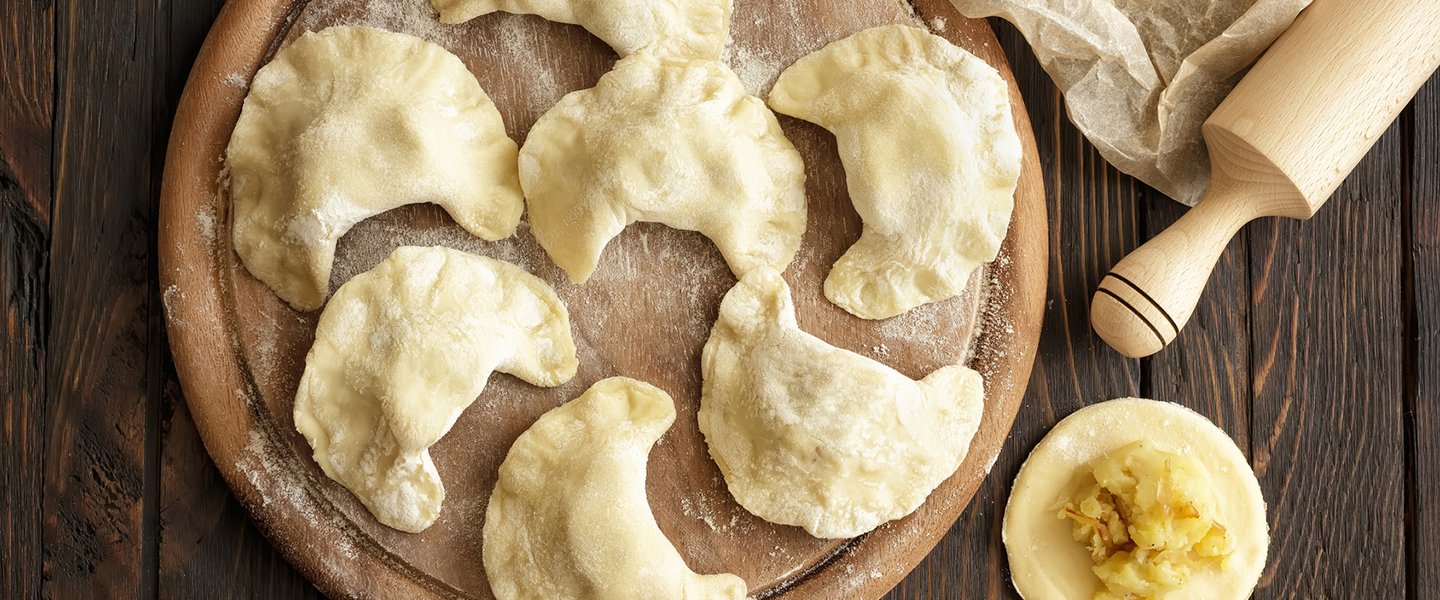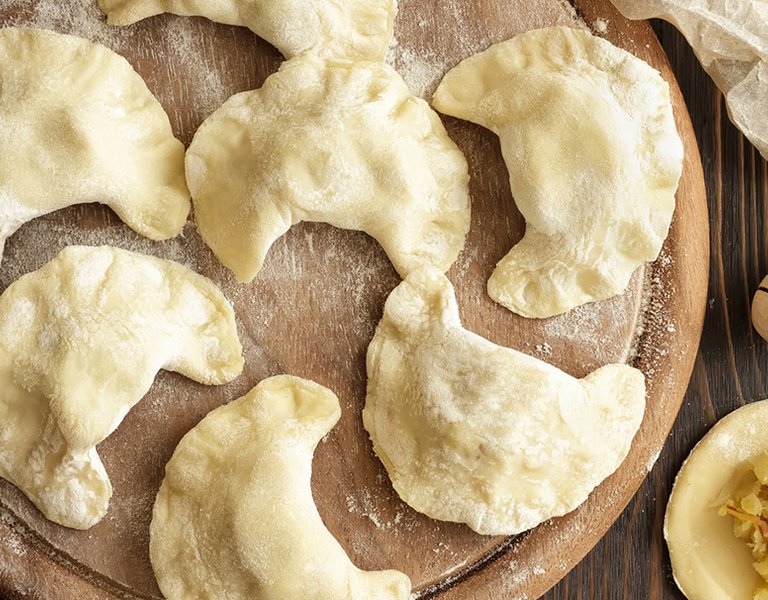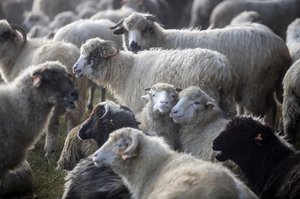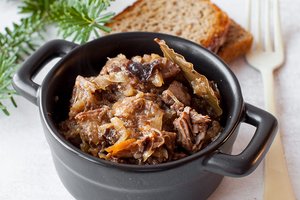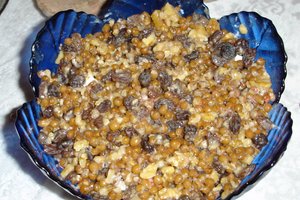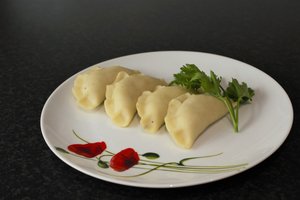Pierogi made with love – and fingerprints
Pierogi are the symbol of Polish cuisine. They have been eaten in Poland since the Middle Ages. It is thought that they were perhaps brought here from as far as China through Russia and Mongolia.
In the past, they would be made only to celebrate holidays – every occasion was accompanied by a different filling. Nowadays pierogi are the most popular dish in Poland and have become the symbol of Polish cuisine.
Monika and Maciej Olejniczak, owners of the Smakfonia company in Poznan, which specializes in traditional and handmade pierogi, tell Polska.pl how to make traditional pierogi and why “no machine can match female hands when it comes to giving off heat to pierogi."
Monika Kucia, Polska.pl: How many pierogi can be made in one hour?
Monika Olejniczak: An average person can make about a hundred. A real expert can produce up to one hundred and fifty.
You mean a thousand per day?
Monika Olejniczak: Yes, it’s quite possible.
How can we distinguish handmade pierogi?
Maciej Olejniczak: One clear characteristic is shape - the more regular and precise ones are very likely machine-made. Handmade pierogi must have the proverbial “fingerprints” along their edges. Some will be big, some will be small, and the dough varies in terms of flexibility. When you see ideal pierogi with suspiciously regular edges, you can be 95% sure it’s an industrial product. The beauty of making pierogiby hand comes from the fact that every piece is different.
Do you take your recipes from family cookbooks? Why do you love pierogi?
Monika Olejniczak: At my home we always made pierogi. It was something natural and normal. As a child, I helped my mom when she was folding together the pastry edge of pierogi. It was a real fun for me! My mother learned how to make pierogi from her mother and this is how it all began. When I was pregnant, I wanted to combine healthy food with something traditional and domestic, and I got back to making pierogi.
Maciej Olejniczak: I remember from my childhood that my grandfather was a perfect cook. Pressing together pastry edges wasn’t his cup of tea, but he would prepare great fillings. Grandma would take care of the dough, and when my aunt came over, the whole family would sit in the kitchen, chatting and making pierogi.
Are your pierogi representative of the traditional cuisine from the Wielkopolska region?
Maciej Olejniczak: Our recipes are a medley of traditions and tastes of our two families. My grandfather and my wife’s grandfather fought in the Wielkopolska Uprising. On the other hand, there are some influences from the former eastern borderlands: Monika's other grandfather lived in Vilnius and my grandpa came from the border area of Podolia and Volynia regions. To this day we keep my great-grandmother’s notebook with recipes and tips how to do the laundry written down in beautiful handwriting.
Is there only one type of dough you make pierogi from?
Monika Olejniczak: Boiled pierogi are made from simple dough based on flour, salt, water and oil, while the dough for pierogi baked in an oven includes yeast. We sometimes make the former type of dough with spinach pulp, which makes the pastry green. Soon we will introduce purple-hued fruit dough with berries. I also tried dough recipes with yoghurt, fizzy water, roasted flour, eggs, milk ... But I have to admit that they didn’t taste right. Milky flavour and too much extravagance simply didn’t catch on. Those who love our pierogi prefer the traditional, classic dough that reminds us of our childhood.
So you add no eggs to the dough?
Monika Olejniczak: No. The more eggs you add, the worse the dough gets.
And what flour do you take?
Maciej Olejniczak: Wheat flour, the so-called 500-type from Koszalin Mills. We are also thinking about pierogi from buckwheat flour, because we found a family recipe from the nineteenth century.
Do you mix dough in a machine?
Monika Olejniczak: No, we do it by hand. The only machine in our company is a meat mincer, because we mince meat ourselves.
Maciej Olejniczak: The whole idea behind our company was to get back to what is really crucial for pierogi, i.e. the fact that they’re made with home methods. The most important element in traditional pierogi is gluten, which makes them glutinous. Gluten in turn forms when it’s hot. This makes female hands particularly good for kneading dough, as they give off their heat to gluten. No machine can do this.
The patron saint of pierogi is Jacek Odrowąż, a 13th-century Dominican monk. An old legend has it that he made this dish by himself to feed the needy during the famine after the Tatar invasion. This earned him the nickname “St. Jacek with pierogi.”
How do you finish pierogi?
Monika Olejniczak: Their edges are flounced or plaited together, and sometimes we use the fork-shaped pattern. We also make uszka dumplings for Christmas.
What do you take for your fillings?
Maciej Olejniczak: We get meat from our friend Dr. Maryniak, who is a butcher from Skórzew near Poznan. He comes from a family of butchers whose tradition goes back eight generations. We also use pork from the local Złotnicka breed of pigs. We cook the meet in a brew with vegetables, salt and spices - bay leaf and allspice. Then we strain and mince all ingredients. Good stuffing for meat-filled pierogi must be cooked but at the same time juicy inside. It cannot be bone dry.
And how do you make pierogi ruskie, i.e. dumplings stuffed with mashed potatoes and cheese?
Monika Olejniczak: Cheese comes from our dairy supplier. We take curd cheese made from unpasteurised milk, which gets naturally ripe and sour. Two days in advance we boil potatoes so that they can dry a bit. Then we mix curd cheese with potatoes and onions and season it.
Maciej Olejniczak: My family comes from the former eastern borderlands, so we add some marjoram to our pierogi ruskie, too.
And what about another Polish classic – pierogi with cabbage and mushrooms?
Maciej Olejniczak: In this case, you need to make sure to add the right amount of sauerkraut. Our sauerkraut comes from a traditional factory near Poznan where they pickle cabbage in barrels, manually remove stalks and use cabbage shredders. Most importantly, cabbage is pickled rather than soured there. The process is based on real lactic acid produced in natural fermentation. The only thing we add to cabbage are forest mushrooms.
How do you think pierogi can be spoilt?
Monika Olejniczak: You can certainly do it when you add the wrong ingredients.
Maciej Olejniczak: Factory machines have no warm hands, so the dough has to have enhancers and chemical substances inside, otherwise it wouldn’t come together properly. That’s why many food producers cheat by using chemical additives or modified starch. The lowest quality meat scraps, breadcrumbs, modified starch, semolina, potato flakes, fats and industrial suet are sometimes also added to the product to increase its weight and fat content. So make sure you read the labels.
Let’s leave the subject of what can go wrong with pierogi. How should we cook them so that they are good?
Monika Olejniczak: You certainly have to throw them into boiling salty water, but you do not need to add any vegetable oil. In the case of frozen pierogi, do not cover the pot, otherwise they could fall apart. Boil them for a moment until they come up. Pierogi are delicate, so water shouldn’t bubble up. As soon as it begins to boil again, reduce the heat so that it does not bubble.
How long should they be boiled?
Maciej Olejniczak: Two, three minutes after they come up. This way pierogi will be warm and the fat will dissolve. You cannot boil for too long, otherwise they’ll overcook.
And how should we fry pierogi?
Monika Olejniczak: You can fry them for example on a pan with butter or goose fat. An all-time classic are fried pierogi with onion, bacon, traditional pork scratchings or scratchings made from smoked lard.
Interview by Monika Kucia
Monika Kucia – culinary journalist and author of Cuisine PL, a brochure published during the Polish Presidency of the EU Council to promote Poland’s gastronomy. Co-author with Kurt Scheller of "Kuchnia Polska, jakiej nie znacie" (Polish Cuisine Rediscovered).
05.09.2014
